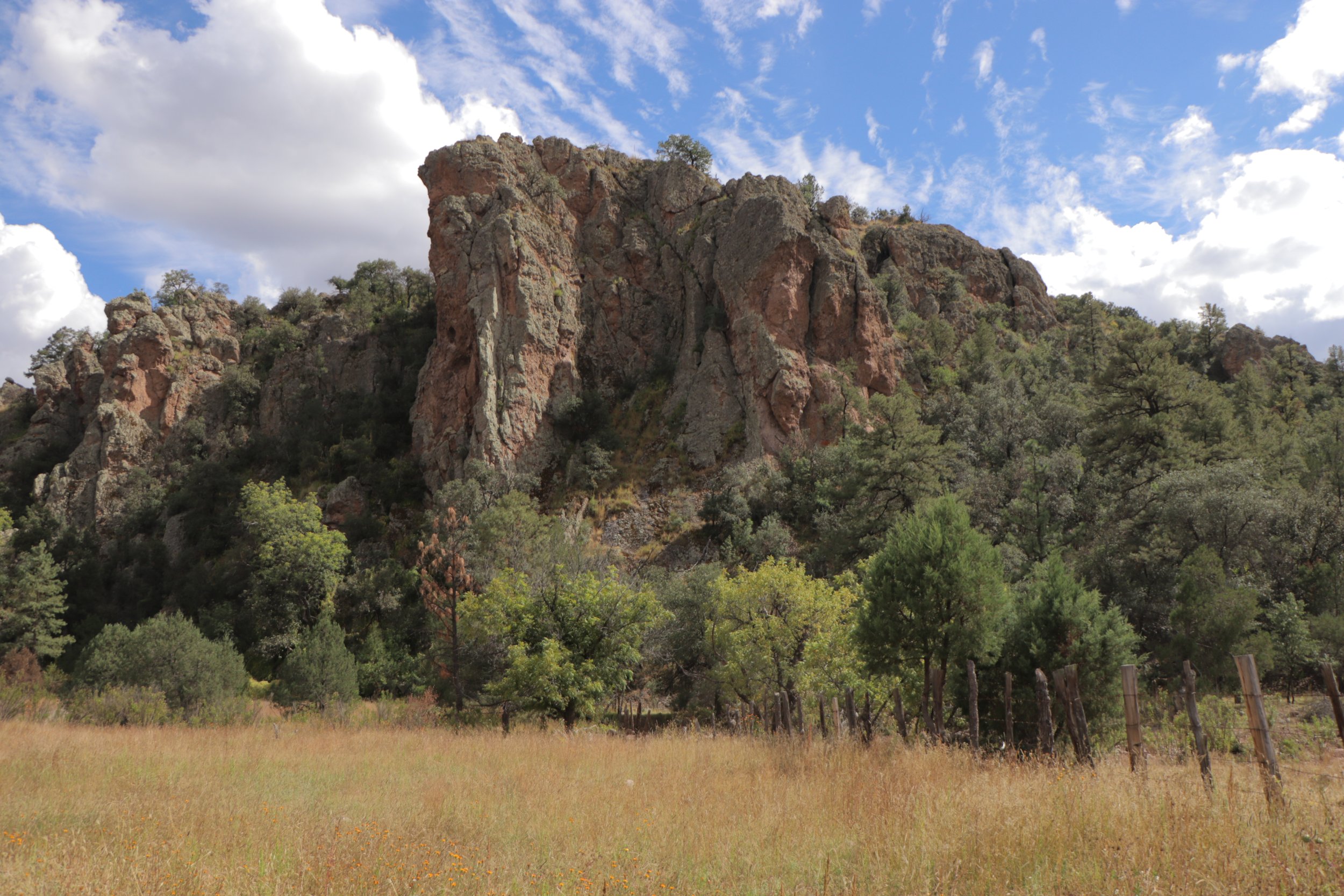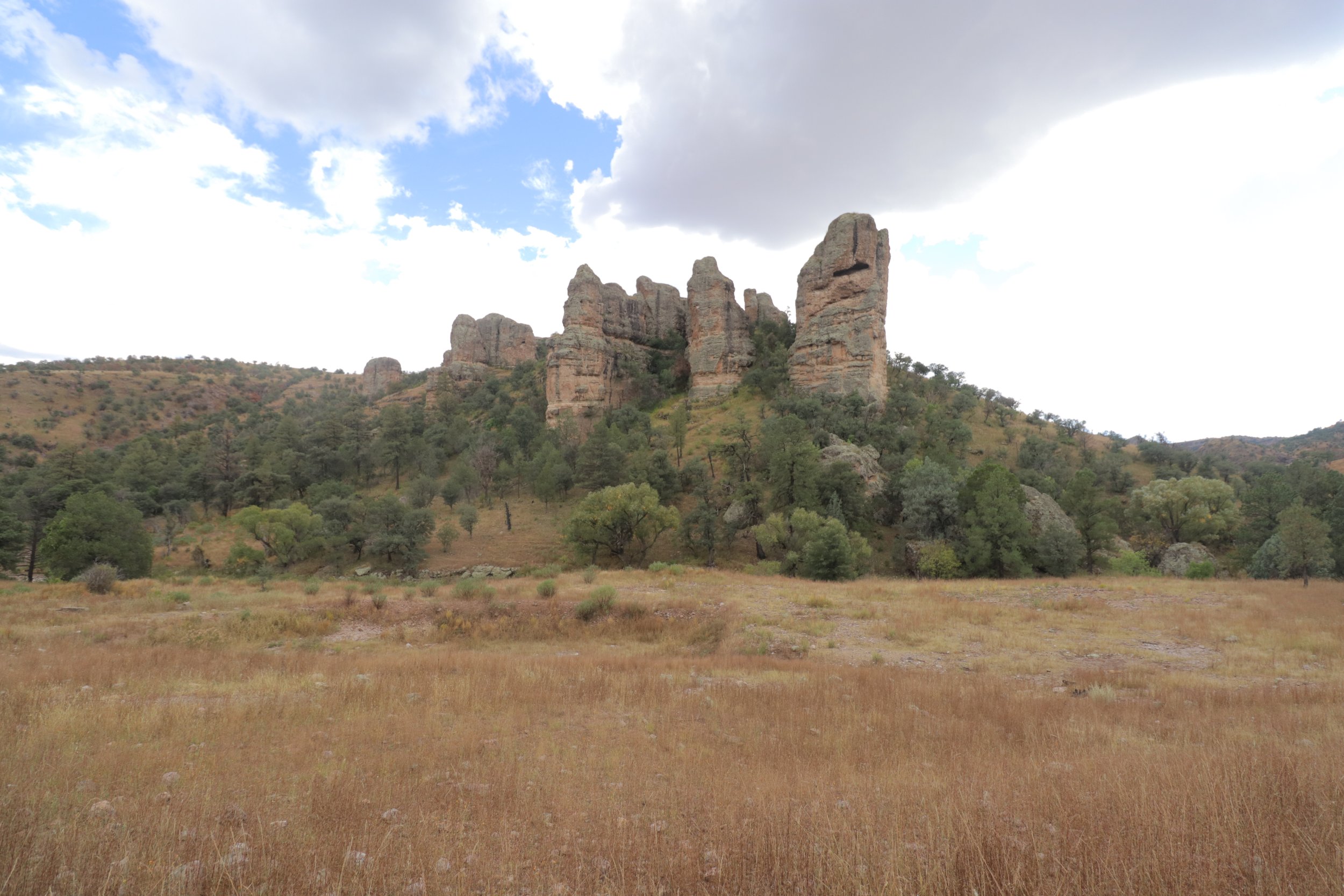Municipality of Madera, Chihuahua, Mexico
PRICE Undisclosed | 27,450 acres
It is not often one has the opportunity to purchase a ranch with all the quality characteristics of good weather, size, quality production, and excellent location. Accessed immediately upon driving across the border from the United States makes it one of a kind. This high Chihuahua ranch lies in a very productive region with gentle valleys and rolling hills and represents some of the most premier grazing country available on the market for the serious cattle rancher.
Location: The ranch is located in the Municipality of Madera, Chihuahua, Mexico about 40 miles south of Nuevo Casas Grandes, Chihuahua.
Acreage: Los Pilares is spread over approximately 27,458 total acres (11,112 hectares) located in a productive, beautiful area of north-central Mexico. The elevation ranges primarily between 5,900 – 7,500 feet.
Improvements: The ranch has 5 houses at the headquarters including the main house. Another building has its own kitchen and ample room for entertaining guests.
Water: Most of the precipitation falls during the monsoon season, which is July through September. Annual precipitation is about 12 inches rain with an additional 5 inches of snow. Los Pilares ranch has 1 well that is serviced by a submersible pump. There are approximately 30 dirt tanks throughout the ranch that stay full for most of the year. Some of the arroyos and canyons have springs and running water year-round.
Stocking: Weather, location, terrain, a wide variety of grasses and vegetation all combine to support an operation for cow/calf, stocker or combination. The stocking rate is about 40 acres per AU. Most of the cattle crossed through the border into the United States originate in Chihuahua, with most from this area crossing into New Mexico at Columbus or Santa Teresa.
Terrain & Vegetation: The terrain is a rolling landscape, with grassland, scrub oak trees similar to the far West Texas area of the Davis Mountains. Premier side oats, and gramma grasses, considered to be drought tolerant, provide excellent grazing. Vegetation includes yucca, agave, cactus, palm, cenizo, ebony, mesquite, biznaga governa oak and pine. The wildlife includes mountain lion, bobcat, coyote, turkey, dove and black bear.
Weather: The area climate is of great variety due to the territorial extension of the municipality and its geographical location allows the winter climate to sometimes be cold with snow. Summers are warm, however, during the rainy season it tends to be very cool. The average maximum temperature is 80 °F in summer and 50 °F in winter and the average minimum temperature is 50 °F in summer and 20 °F in winter. If there is fall and winter moisture a variety of late winter and spring plants are grown including filaree and other high protein plants.
+ Read More
Minerals: The minerals are owned by the country of Mexico.
Ranching in Mexico: The Mexican Constitution regulates the ownership of the land and establishes that “…in a zone of 100 kilometers along the border or 50 kilometers along the coast, a foreigner cannot acquire the direct ownership of the land.” These areas are known as the “Restricted or Prohibited Zones”. However, the latest Mexican Foreign Investment Law, which became law in 1993, makes allowances. Non-residential property can be purchased through a Mexican corporation which can be, under certain conditions, 100% foreign-owned, with a provision in its by-laws that the foreigners accept to be subject to Mexican laws and agree not to invoke the laws of their own country.
History: The Casas Grandes region of northern Chihuahua has long been recognized as a place of great cultural diversity. Over the years, the region has been occupied by the Paquimé, Tarahumaras, Spaniards, Sumas, Apaches, Americans, Chinese, and of course, Mexicans. Álvar Núñez Cabeza de Vaca was the first Spaniard to visit the area. Two additional groups, Mennonites and Mormons, came south into Mexico to avoid persecution for their religious and cultural practices. Their methods of farming are very advanced, using the latest technology and boosting the agricultural economy in the region.
Region: The municipality of Madera is located in the western part of the state of Chihuahua, crossed by the Sierra Madre Occidental and on the border with the state of Sonora. It is one of the 67 municipalities of Chihuahua. The municipality is also known for its caves and parks and within a 50 km radius of the town of Madera (municipal seat) there are many caves featuring pre-Columbian artworks.
Casas Grandes, located about 40 miles north, is the most important archaeological zone in Chihuahua. The great Puebloan community of Paquimé was the center of the Casas Grandes culture for over 300 years, reaching the peak of its power in the 13th century. It is believed that the population of the city reached 10,000, with most inhabitants living in five- and six-story “apartment” buildings. Featuring small T-shaped doors, a ceremonial area, temple structures, a ball court, ceremonial pyramids and a cross-shaped mound with perfect astronomical orientation, the Paquimé ruins spark wonder and admiration. Between AD 300 and 1300 along the wide, fertile valley on the San Miguel River the Casas Grandes (Big Houses) culture developed into an advanced civilization. The Casas Grandes civilization is part of a major prehistoric archaeological culture known as Mogollon which is related to the Ancestral Pueblo culture. Paquimé was the center of the Casas Grandes civilization. Extensive archaeological evidence shows commerce, agriculture, and hunting at Paquimé and Cuarenta Casas (Forty Houses)
Chihuahua: Chihuahua continues to have one of the fastest-growing economies in Mexico. Because of its proximity to the United States, just south of New Mexico and part of Texas, Chihuahua is strategically important to Mexico. Accounting for 12.6% of the land in Mexico, it is the largest state, with an area of 95,543 square miles, slightly larger than the United Kingdom.
CO-LISTED with Bryan Pickens and Charles Davidson, Republic Ranches




























